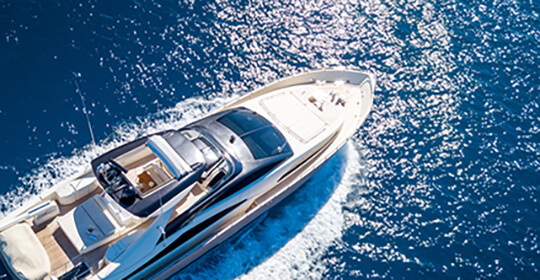7 Practical Tasks for Spring Boat Motor Maintenance
By Ken Schultz
May 17, 2024
You can keep your motor healthy and ready for the season’s first and future outings by following these practical spring boat motor maintenance tasks
Failure to properly maintain a boat motor is the leading cause of spring boating troubles.
I don’t know if that’s a real statistic. I made it up because I recently read that heart disease is the leading cause of death. But it sounds plausible, no? After all, a dead or ailing motor is often the result of neglect-it disease. So, recognizing that we’re already well into spring boating season in most of the country, here are some spring boat motor maintenance steps that will help keep your motor healthy.
1. Start With Winter Layup. It’s too late now, but for the future, remember that a healthy spring motor starts with a healthy fall motor. If you want to know how to prepare a boat motor for spring, learn how to prep it for layup. If you winterized it, you may not need to do much come spring.
2. Consider Only Using Ethanol-Free Fuel. Seriously consider this, even though the cost of ethanol-free fuel is 75 cents to one dollar higher on average than 10% ethanol gas. My 13-year-old 90hp outboard has never sucked a drop of 10% ethanol gas and has not yet had a carburetor or other internal problem.
3. Begin With Good Gas. I’ve seen spring boat motor maintenance recommendations that you should dump old gas and start with fresh gas, and I guess that whoever suggests this just hasn’t bought gas at current prices, or has a very small tank. This may be necessary if you have a gummed up gas tank, but that usually means you need a new tank and shouldn’t happen if you:
• Follow #2 above.
• Put a good fuel stabilizer in the gas tank when you last filled and ran the boat. Ask a dealer what is recommended for your engine and check your owner’s manual.
• Run the engine (hooked to a water hose) for 20 minutes every couple of weeks when the boat is laid up.
• Never use 15% ethanol gas (which likely voids your warranty anyway).

4. Check Engine Oil. And the filter(s). When you first run it, make sure there’s no leaking oil.
5. Check the Water Pump. Depending on how often you use the motor and under what conditions (especially in shallow sandy/muddy water) you may need to replace this every season, or every two or three years (or every 200 hours). Make sure there’s a strong water stream from the discharge; if not, the engine will quickly overheat. Insert a straight piece of hard wire into the discharge to loosen any blocking particles.
6. Check Battery and Wires. This is a key item on any spring boat maintenance checklist. Corrosion is rough on battery connections, especially if you boat in saltwater. Batteries weaken in the cold. Getting power to the engine is compromised if these are not in top shape. So:
• For long-term layup, consider disconnecting the battery, storing it in a warm environment, and connecting a timer and charger to maintain charge level.
• Clean battery terminals with a wire brush and/or sandpaper, and do the same to each connector (for engine and accessories).
• Before reattaching connectors, apply dielectric grease to each component and the battery terminals to help resist corrosion.
7. Test The Motor Before Going Boating. Spring boat motor maintenance would be incomplete without a test run. You can run the engine in your yard or driveway if it’s hooked up to a water hose. Some motors require use of a flushing device that attaches over the intake on the lower unit. Some have a port that you directly connect a water hose to. With water going into the motor, make sure you can start the motor, that it will idle at low rpms, and that it won’t cut out when you throttle from forward gear into neutral or from neutral into reverse. If idling is a problem, a mechanic may need to adjust engine settings, and it’s better to get this and anything else resolved before you find yourself in a jam on the water the first time out.
Lastly, remember that manual you got with the motor? (Or had to download?) Check it out for manufacturer recommendations to be sure you haven’t missed anything.









